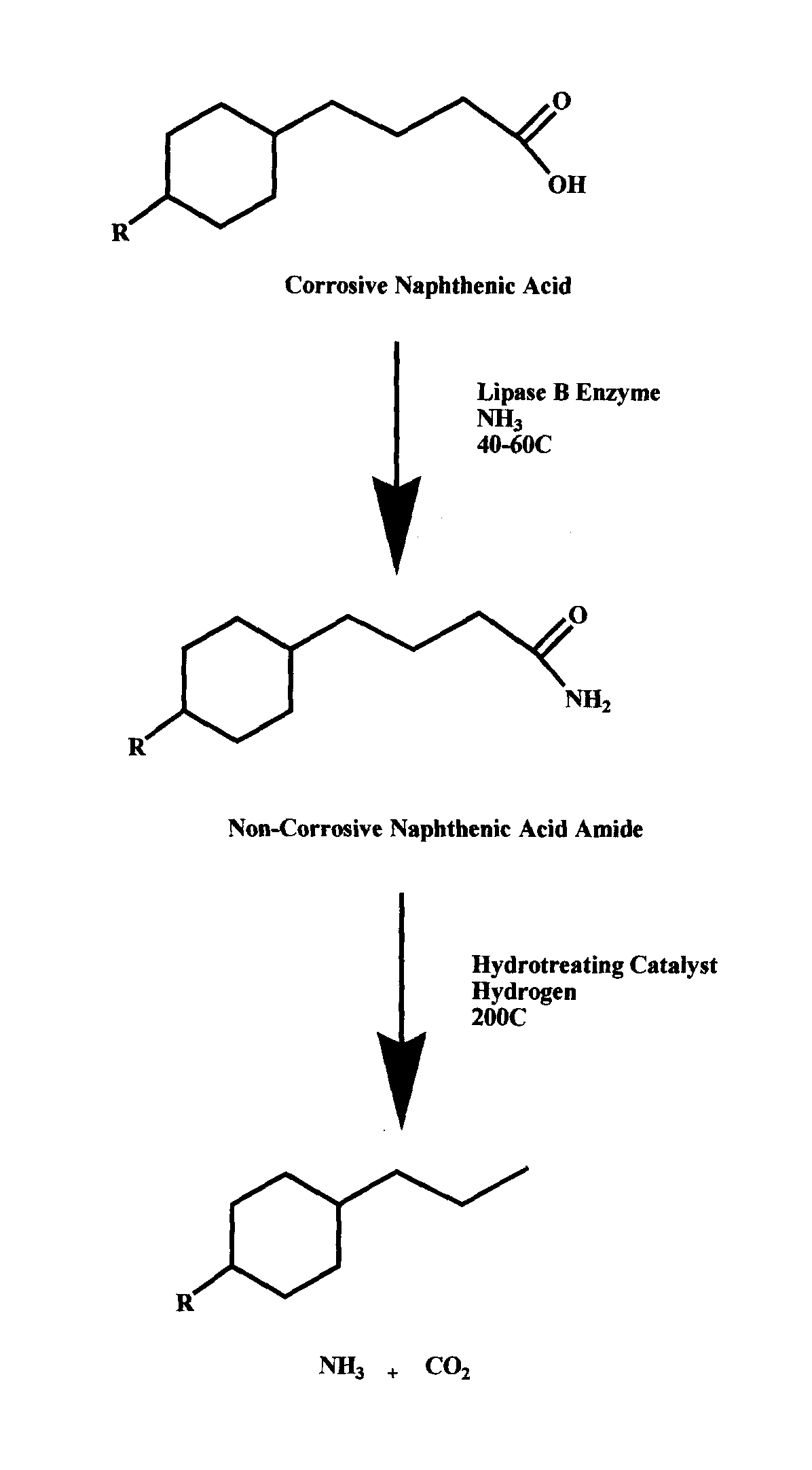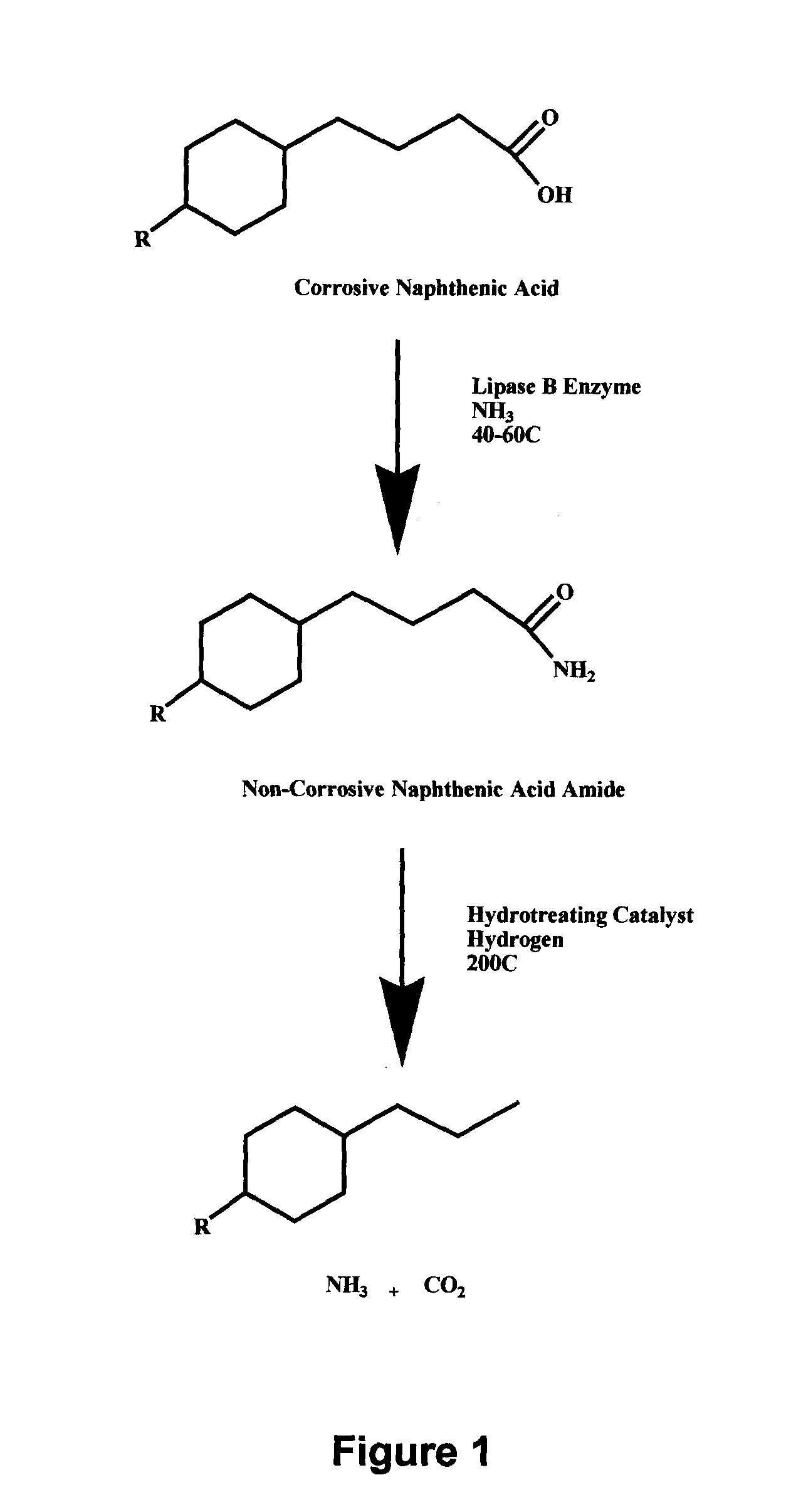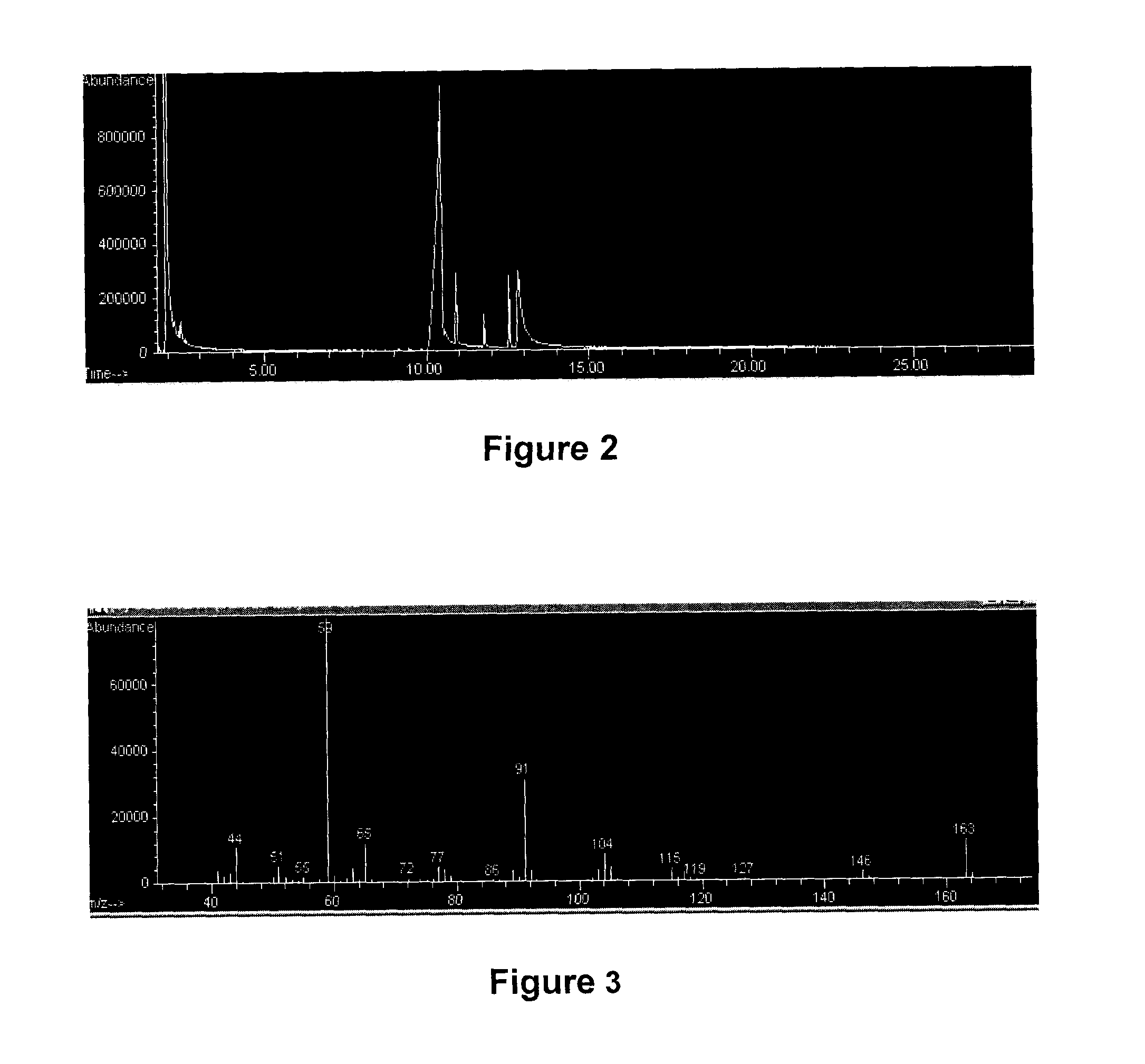Petroleum bioprocessing to prevent refinery corrosion
a bioprocessing and refinery technology, applied in the field of bioupgrading crude oil, to achieve the effect of reducing environmental impacts, reducing energy consumption, and improving the quality of crude oil and bitumen
- Summary
- Abstract
- Description
- Claims
- Application Information
AI Technical Summary
Benefits of technology
Problems solved by technology
Method used
Image
Examples
Embodiment Construction
[0033]Crude oils can contain organic acids that are mainly comprised of naphthenic acids that contribute to corrosion of refinery equipment at elevated temperature.
[0034]The present invention discloses that when organic acids, such as naphthenic acids, found in crude oil or bitumen are treated with enzymes, in particular lipase enzyme, in combination with ammonia hydroxide or other amines, they can be converted into naphthenic acids derived amides that do not possess corrosive properties. The process is accomplished by dissolving the naphthenic acid containing crude oil or bitumen in diluent (organic solvent). To the naphthenic acid solution were added ammonium hydroxide and / or other amines, such as ammonium carbamate or dodecylamine, and lipase enzyme resin. The mixture was then incubated at 40° C.-60° C. in a reactor with mixing. The resulting naphthenic acid derived amides found in the diluted crude oil or bitumen can then be processed normally in a refinery using such processes ...
PUM
| Property | Measurement | Unit |
|---|---|---|
| temperature | aaaaa | aaaaa |
| temperature | aaaaa | aaaaa |
| temperature | aaaaa | aaaaa |
Abstract
Description
Claims
Application Information
 Login to View More
Login to View More - R&D
- Intellectual Property
- Life Sciences
- Materials
- Tech Scout
- Unparalleled Data Quality
- Higher Quality Content
- 60% Fewer Hallucinations
Browse by: Latest US Patents, China's latest patents, Technical Efficacy Thesaurus, Application Domain, Technology Topic, Popular Technical Reports.
© 2025 PatSnap. All rights reserved.Legal|Privacy policy|Modern Slavery Act Transparency Statement|Sitemap|About US| Contact US: help@patsnap.com



